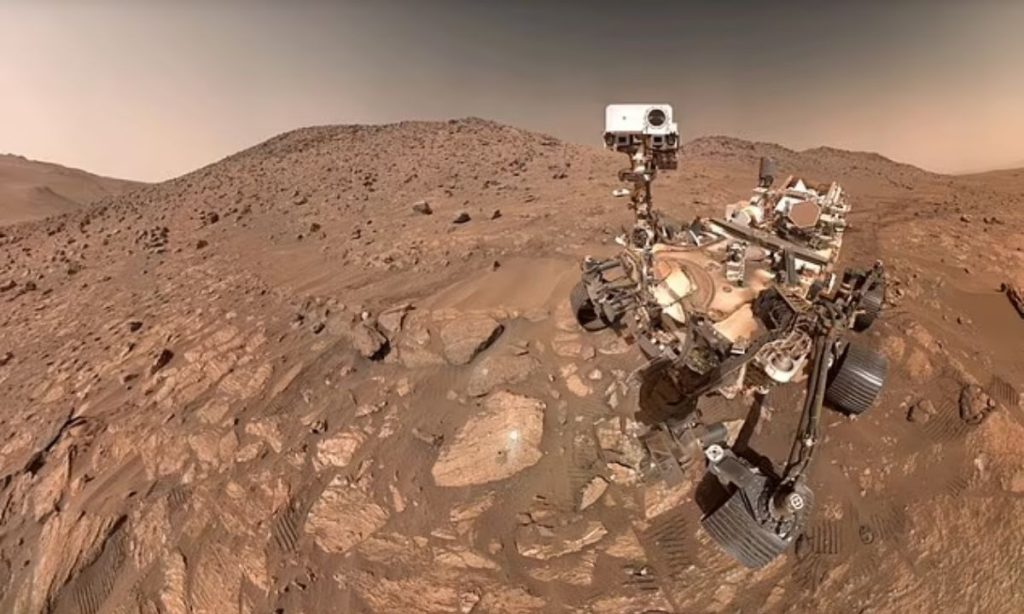NASA’s Mars rover, Perseverance, has discovered potential signs of life that existed billions of years ago on the Red Planet. The rover identified an “arrowhead-shaped” rock, named Cheyava Falls, which exhibits chemical signatures and structures that could have been formed by microbial life.
The rock, measuring 3.2 feet by 2 feet, was found to contain veins and chemical signatures that suggest the presence of organic material. Perseverance project scientist Ken Farley described Cheyava Falls as “the most puzzling, complex, and potentially important rock yet investigated by Perseverance.” Farley noted that the rock shows clear evidence of water, a necessary component for life, and distinctive colorful spots that could indicate chemical reactions used by microbial life as an energy source.
However, the exact formation process of the rock remains unclear. Farley stated, “On the one hand, we have our first compelling detection of organic material, distinctive colorful spots indicative of chemical reactions that microbial life could use as an energy source, and clear evidence that water — necessary for life — once passed through the rock. On the other hand, we have been unable to determine exactly how the rock formed and to what extent nearby rocks may have heated Cheyava Falls and contributed to these features.
Between the veins on the rock, scientists discovered material with a reddish color, suggesting the presence of hematite, a mineral that gives Mars its characteristic burnt orange color. Analysis of these gaps revealed “dozens of irregularly shaped, millimeter-size off-white splotches, each ringed with black material, akin to leopard spots,” according to NASA.
David Flannery, an astrobiologist and member of the Perseverance science team, commented, “These spots are a big surprise. On Earth, these types of features in rocks are often associated with the fossilized record of microbes living in the subsurface.”










